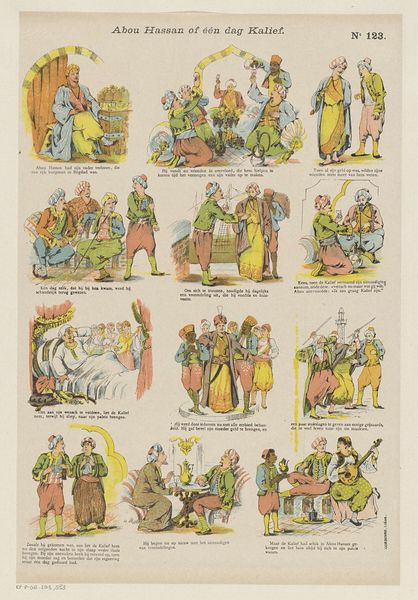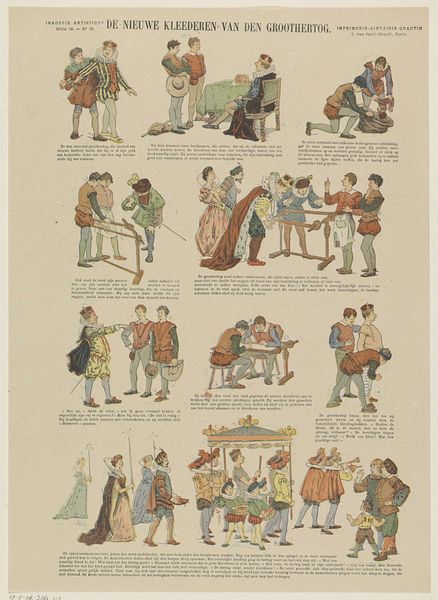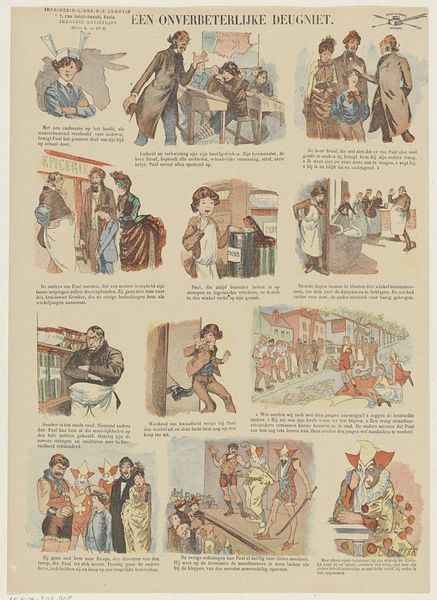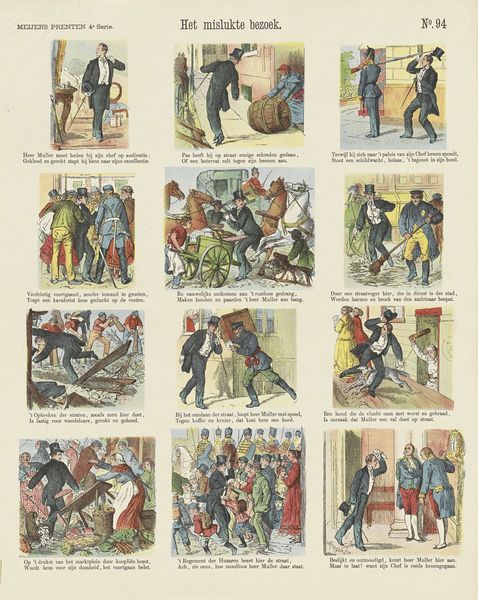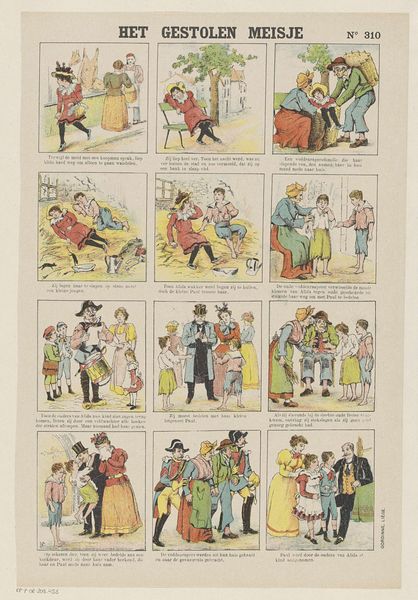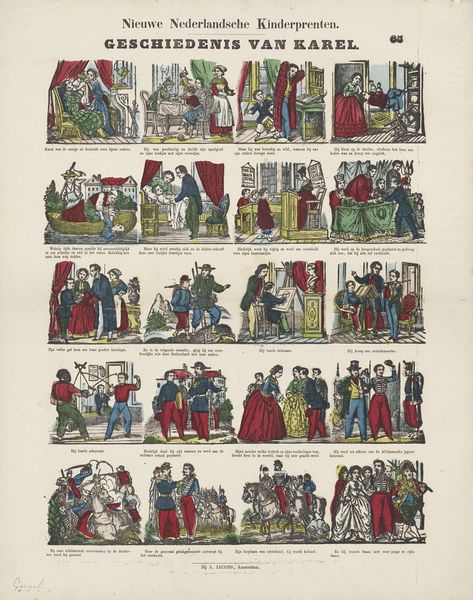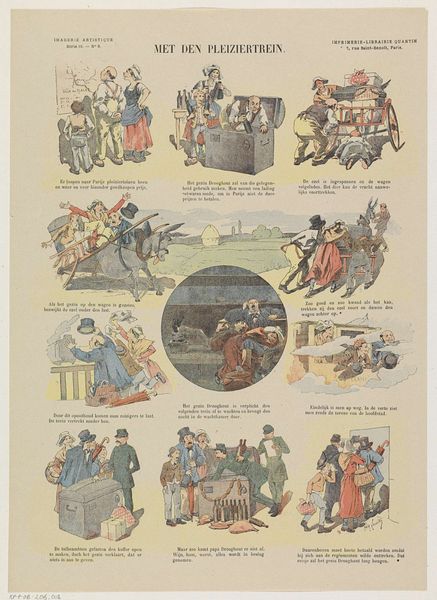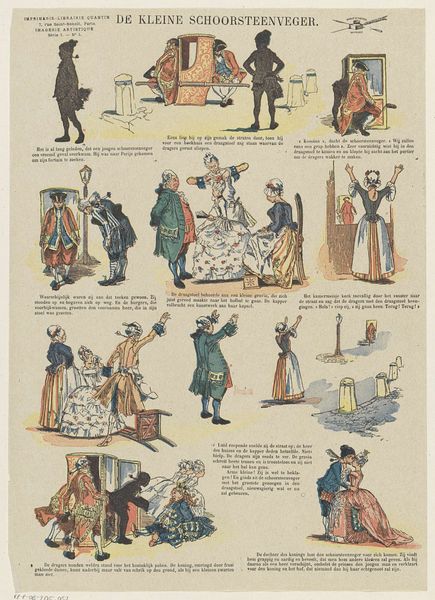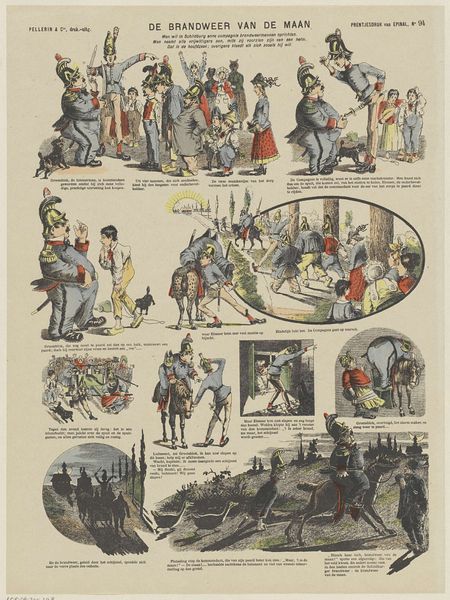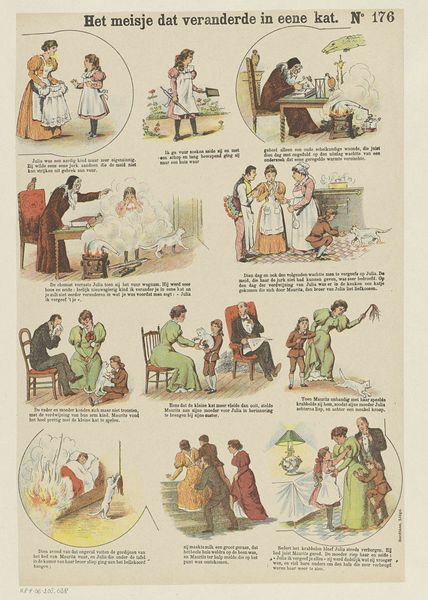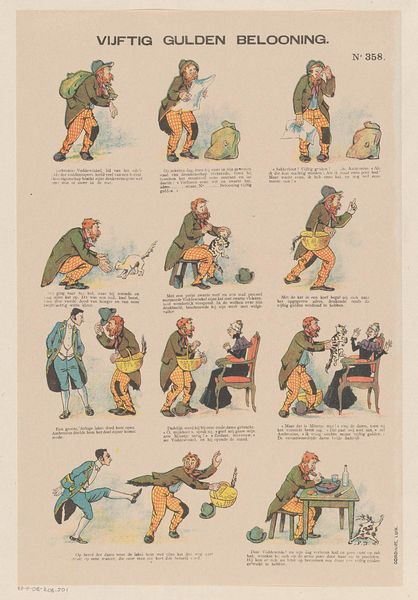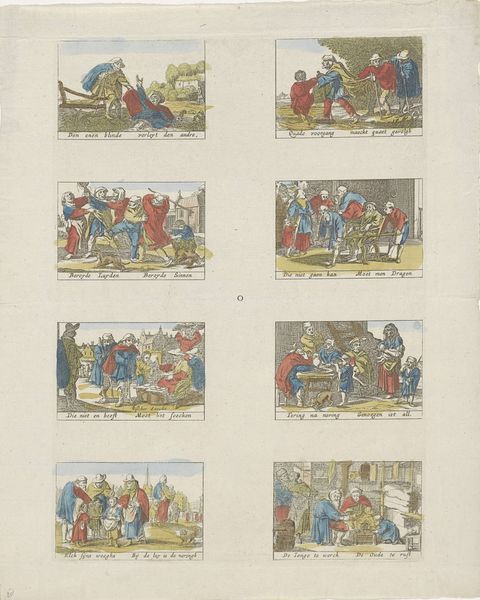
lithograph, print
#
portrait
#
lithograph
# print
#
landscape
#
genre-painting
Dimensions: height 368 mm, width 264 mm
Copyright: Rijks Museum: Open Domain
Editor: This is "Wapenschouwing," a lithograph print by Albert Quantin, made sometime between 1876 and 1895. It’s got this quaint, almost storybook feel, showing children in different scenes playing at soldiering. What do you see when you look at this piece, especially considering its historical context? Curator: Well, what immediately strikes me is the interesting confluence of childhood innocence and the pervasive militaristic culture of the late 19th century. These children aren't just playing; they are mimicking the adult world, absorbing and replicating its values. Consider the rise of nationalism and militarism during this period in Europe, which seeped into every facet of society. Editor: So you are saying that, this print served a purpose to reinforce that militaristic culture onto young children? Curator: Precisely. These images weren't created in a vacuum. Quantin, through his art, consciously or unconsciously, was contributing to the normalization of military ideals and patriotism for these youngsters. Ask yourself who this print was created *for.* What was the context in which these prints circulated? It shows how potent imagery is when it is tied to certain social agendas. The public role of art is also at stake, it serves as a mirror for the politics. Editor: That's a little unsettling when you put it that way, but I can also see it reflecting the art style popular at the time. What purpose do you think the landscapes serve, if any? Curator: I wonder if you're saying they soften the militaristic undertones of children using fake sabres? And also consider, through which distribution networks were prints such as this created, bought, and shared? These aspects shed light on understanding social life during those times. Editor: I guess, I always saw it as a harmless depiction of children playing. I hadn't considered its deeper cultural and historical implications, so this print offers quite a profound message about how values are transferred and instilled within society. Curator: Indeed. And understanding those subtleties, that’s where art history truly comes alive.
Comments
No comments
Be the first to comment and join the conversation on the ultimate creative platform.
